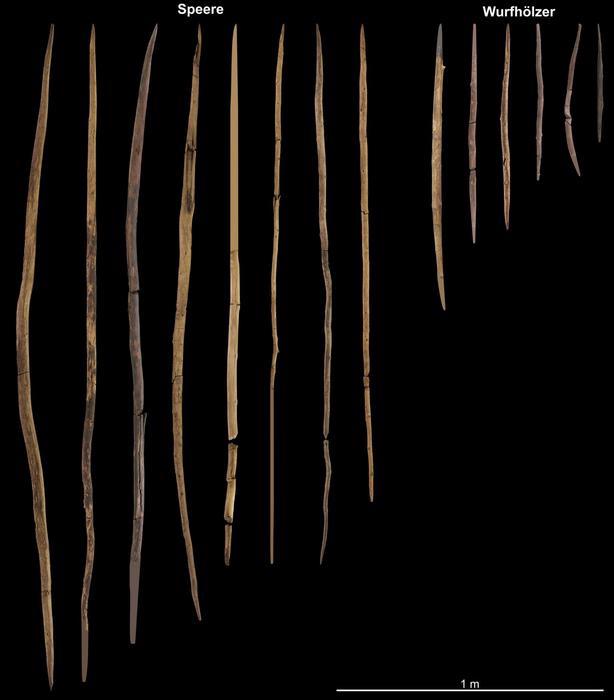 GÖTTINGEN, GERMANY—According to a statement released by the University of Göttingen, the wooden hunting weapons discovered among animal bones in 300,000-year-old deposits on what had been a lakeshore in northwestern Germany’s Schöningen site have been studied by researchers from the University of Göttingen, the University of Reading, and the Lower Saxony State Office for Cultural Heritage (NLD). The wood objects were examined with 3-D microscopy and micro-CT scanners, which revealed that wood was split and sharpened using a wide variety of techniques and sophisticated work processes. The researchers think that the wooden hunting weapons were then carried to the Schöningen site, where evidence suggests that broken tools were repaired and recycled. “Wood was a crucial raw material for human evolution,” commented team leader Thomas Terberger of the University of Göttingen and the NLD, “but it is only in Schöningen that it has survived from the Paleolithic period in such quality," he concluded. For more on these weapons, go to "Weapons of the Ancient World: Hunting Equipment."
GÖTTINGEN, GERMANY—According to a statement released by the University of Göttingen, the wooden hunting weapons discovered among animal bones in 300,000-year-old deposits on what had been a lakeshore in northwestern Germany’s Schöningen site have been studied by researchers from the University of Göttingen, the University of Reading, and the Lower Saxony State Office for Cultural Heritage (NLD). The wood objects were examined with 3-D microscopy and micro-CT scanners, which revealed that wood was split and sharpened using a wide variety of techniques and sophisticated work processes. The researchers think that the wooden hunting weapons were then carried to the Schöningen site, where evidence suggests that broken tools were repaired and recycled. “Wood was a crucial raw material for human evolution,” commented team leader Thomas Terberger of the University of Göttingen and the NLD, “but it is only in Schöningen that it has survived from the Paleolithic period in such quality," he concluded. For more on these weapons, go to "Weapons of the Ancient World: Hunting Equipment."
Germany’s Paleolithic Wooden Weapons Analyzed
